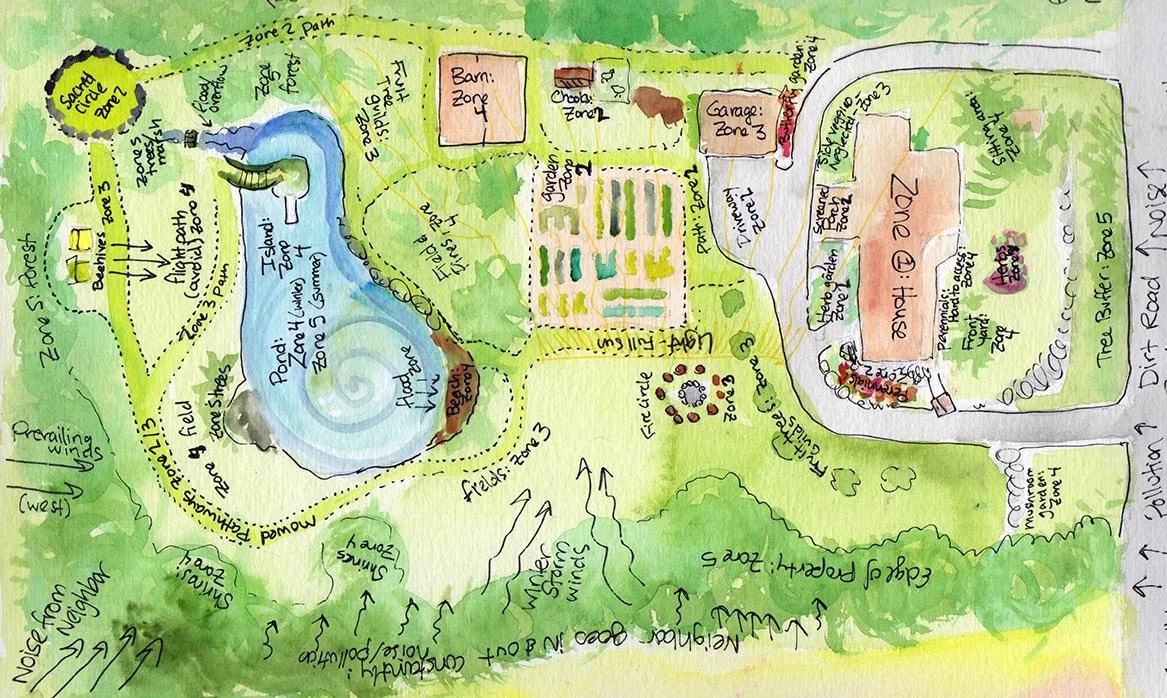Permaculture Design
Permaculture design is a core element of land-based living, offering a holistic approach to harmonising human habitation with the natural world.
Rooted in principles of observation, mimicry of natural systems, and the wise use of resources, permaculture design seeks to create resilient ecosystems that support human needs while enhancing biodiversity and ecological health.
At its core, permaculture embodies a profound reverence for the land, advocating for a deep connection with nature and a commitment to the principles of deep ecology.
Here are some key aspects of permaculture design:
Observation: Permaculture design begins with careful observation of the natural environment, including climate, soil, water, and existing vegetation patterns.
Design Principles: Permaculture is guided by a set of principles that are derived from observing natural systems. These principles include working with nature, rather than against it; integrating diverse elements to create mutually beneficial relationships; and valuing renewable resources and the wise use of energy.
Zones and Sectors: Permaculture designs often organize elements into zones based on their frequency of use and sectors based on external influences such as sunlight, wind, and water flow. This helps optimize the placement of elements for efficiency and accessibility.
Polycultures: Unlike conventional agriculture, which often relies on monocultures, permaculture encourages the planting of diverse polycultures that mimic natural ecosystems. This helps increase resilience to pests, diseases, and environmental fluctuations while maximizing productivity.
Soil Health: Permaculture emphasizes building and maintaining healthy soil through practices such as composting, mulching, cover cropping, and minimal tillage. Healthy soil is essential for nutrient cycling, water retention, and supporting a thriving ecosystem.
Water Management: Permaculture design includes strategies for capturing, storing, and conserving water, such as rainwater harvesting, swales, ponds, and water-efficient irrigation techniques. These techniques help mitigate droughts, prevent erosion, and support plant growth.
Energy Efficiency: Permaculture aims to minimize energy inputs by utilizing renewable resources, passive solar design, and efficient technologies. Designing for energy efficiency reduces reliance on fossil fuels and lowers environmental impact.
Waste Reduction: Permaculture systems are designed to minimize waste by recycling and reusing materials, composting organic matter, and closing nutrient loops. This creates a self-sustaining system where waste becomes a resource.
Community and Culture: Permaculture is not just about ecological design but also about fostering resilient and vibrant communities. It emphasizes cooperation, sharing, and local self-reliance, promoting social connections and cultural diversity.
Overall, permaculture design seeks to create regenerative systems that meet human needs while enhancing ecosystem health and biodiversity.
